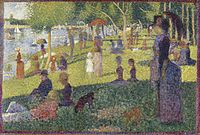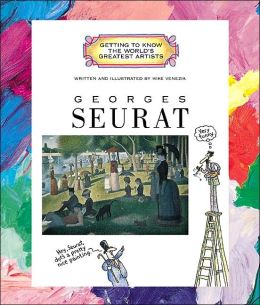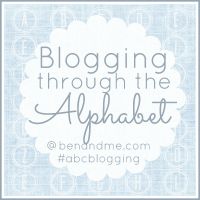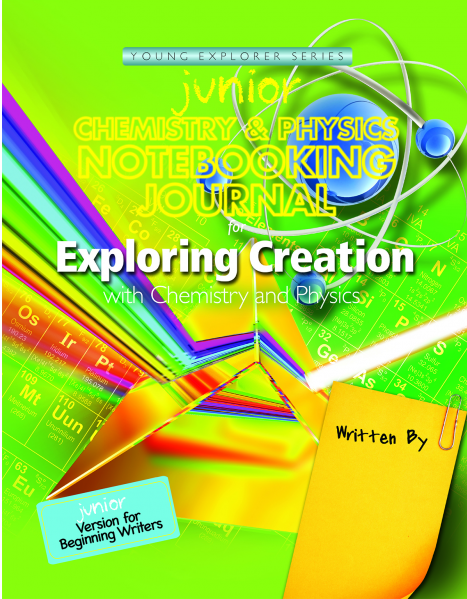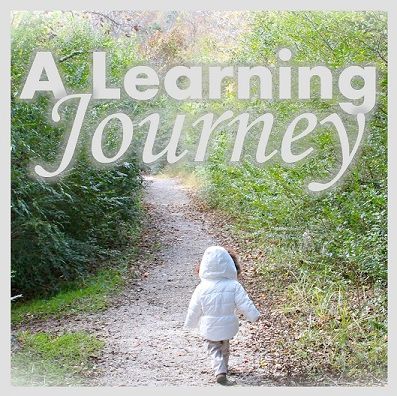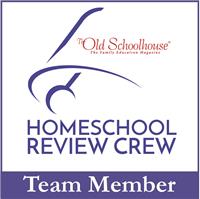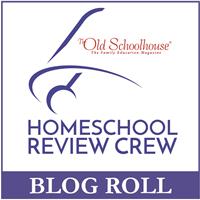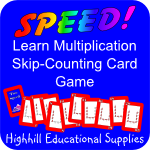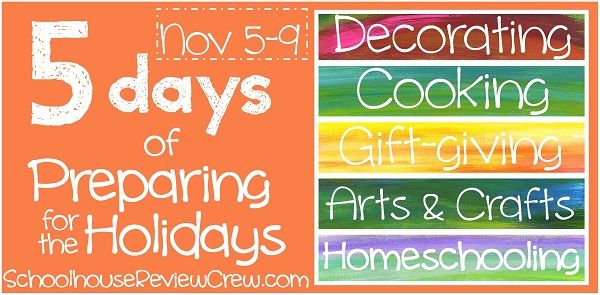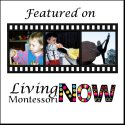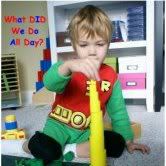Alyssa and I recently had the opportunity to review the Once-a-Week Unit Study called Christmas Comes to America published by Homeschool Legacy. I was delighted when I was contacted about reviewing this unit study, because it has been on my wishlist since last year when we reviewed the Birds of a Feather Unit Study. Christmas is my favorite holiday to celebrate! I always wanted to teach Alyssa about how certain Christmas symbols and traditions came to America which is why this particular unit was of interest to me. Once-a-Week Unit Studies were designed by Sharon Gibson who is a veteran homeschooling mom of 16 years. I received a digital copy of this unit study in PDF format via e-mail for review purposes only. I immediately downloaded it so that I could dig into the material that same day! I stored the printed file in a folder with three ring prongs. Please understand that ALL Once-a-Week Unit Studies that you purchase from Homeschool Legacy will arrive in the mail as physical products in hard copy format only.
Are you planning your Christmas activities for your children yet?
If so, I want to tell you about a Christmas unit that may be a perfect fit for your family.
Week 1 The Dutch
Week 2 The English
Week 3 The Germans
Week 4 An American Christmas
I used this unit study with my five-year-old daughter. Christmas Comes to America was implemented as a stand-alone unit study in our home during the review period. The idea is to choose and dedicate one day each week to complete ALL the core once-a-week unit study activities. They recommend Wednesdays, because it is in the middle of the week and offers children a break from the normal routine. We tried to complete the activities on Tuesdays or Wednesdays. We ended up dividing the hands-on unit study activities throughout the week, because of our busy schedule, my daughter's age, her personality, her learning style, and the fact that we were planning her sixth birthday party. I believe this schedule allowed her to retain and better understand the information presented. I also couldn't eliminate all other curricula for one day as the unit indicates, because our extracurricular activities and driving out-of-town take up a lot of time during the week. A family devotion with memory verses emphasizing the true reason we celebrate the season (birth of Jesus) was read once-a-week. We decided to read and discuss the family devotions on Sunday morning instead of on the main unit study day. The rest of the week you are to continue using your current curricula while integrating family read-alouds and independently read books referred to as Daily Activities into your daily schedule. The company suggests reserving movies for Friday. We usually watched movies over the weekend or on Monday Movie night. As you can tell, I tweaked the unit to meet our family needs which is one of the reasons why I LOVE Homeschool Legacy's unit studies. They are extremely flexible and the pace is completely up to you. You can read their scheduling tips here.
Please remember that not all suggested books must be read. My family and I learned about a Christmas tradition or symbol each day. Furthermore, we did not complete EVERY activity, because I wanted to save several of the activities for December so that my daughter could make appropriate connections to the season. There are more than enough activities for several years and they can also be repeated year after year. I chose several activities from each week's lesson to complete. It was a little awkward talking about Christmas during the month of October before Halloween, but my daughter didn't seem to mind.
Product Description
The complete 52-page Christmas unit study begins with an introduction about why you should use once-a-week unit studies. A table of contents, a welcome letter, a list of available products, music appreciation merit badge requirement sheets, schedule suggestions, and a Merry Christmas letter describing the focus of the study are also at the front of the unit. A common theme for all four weeks is the idea of the gift giver. The bulk of the unit study follows those pages including a list of pick and choose read-alouds for non-readers, optional book choices, Christmas classic movies, and music selections covering a variety of music styles. I recommend that you read the "Getting the Most Out of Your Once-a-Week Unit Study" found at the back of the unit on page 41 before beginning the unit for additional information on scheduling, teaching tips, ways to adapt writing activities, and more.
| A Few of Our Read-Aloud Books |
| Chosen Movie Selections |
- Family Devotions from the Bible
- Independent and Family Reading
- Language Arts
- History
- Geography
- Traditions and Culture
- Research
- Music Appreciation and History
- Arts and Crafts
- Life Skills and Gift Giving
- Field Trips
- Family Trivia Game
- Family Movie Night
- Fun and Science
Week One - The topic we addressed was the traditions and the contributions from the Dutch settlers.
My daughter learned about Sinterklaas and located his birthplace on the globe (Asia Minor - present day Turkey). I can't tell you how excited she was when I told her we were going to make "homemade" hot cocoa. She looked at me with shocked eyes and didn't realize that hot cocoa could be made instead of purchased in packets. She frequently asked me, "When are we going to make the hot cocoa?" We cut the recipe in half. The cocoa was delicious! We drank the cocoa during family movie night and when outdoors by the fire. We weren't going to prepare the hot cocoa mugs until closer to Christmas time so we didn't need to purchase the mugs and cellophane bags at this time. She also wrote a Christmas wish list that was in the form of a letter to God instead of writing to Santa as part of her language arts writing assignment. We have been listening to Christmas music almost every single day since we received the unit. Alyssa jots down each title on a numbered piece of paper. As the unit progressed, we just wrote the number of the song title down instead of rewriting each one. We also discussed a few musical compositions and tried to recognize instruments we heard.
| Ingredients: Recipe Included in Unit |
| Making Hot Cocoa |
 |
| YUMMY! |
| Identifying Locations on the Globe |
| Christmas Wishlist Letter |
Father Christmas or St. Nicholas was the gift giver we focused on during the second week. We read "A Christmas Carol." It was available as a chapter and picture book. After identifying Great Britain on the globe, we learned about the history behind caroling. I can honestly say that I NEVER knew the history of this common Christmas activity. We didn't make the wassail yet, but we purchased the supplies so that we can make it for our indoor caroling party. The houses in our neighborhood are too far apart for an outdoor caroling party. Alyssa is currently searching the Internet for lyrics of popular carols to print. She will also create an invite on the computer. We plan on giving each person a candy cane with a note explaining the Christian legend behind the symbol. I believe I have seen several templates free on the Internet. We sang numerous Christmas carols this week. Alyssa brought a Christmas carol book with her when traveling into town. She spread holiday cheer and joy to anyone that would listen to her sing. My daughter also asked her piano teacher about the notes seen in several Christmas songs found in her piano book. I am glad that she started creating Christmas cards ahead of time this year - maybe we'll get them sent out earlier this year. She still has a number of cards she wants to make so this project will continue into the month of December. Alyssa also researched the term "music" in her encyclopedia and online. She created a poster that showed the five instrumental families.
| Several Books We Read |
 |
| Poster in Progress: Five Families of Instruments |
| Christmas Music Composition Note - 3 Beats |
| Christmas Card Pre-Planning |
 |
| Christmas Card Designs |
We used the books "Christmas in Today's Germany" and the book titled, "Sebastian: A Book About Bach" written by Jeanette Winter. I couldn't borrow any of the other books from our library so I read a few titles related to the topic from our personal collection. The gift giver of the week was Christkindl which means Christ Child. The term Kris Kringle originated from this gift giver's name. She located colonies where German immigrants settled and read about Joseph's discussion with Gabriel. I asked her to illustrate the meaning of the scripture in her journal. We focused on Sebastian Bach and enjoyed hearing his compositions online and reading biographies about him. We discussed and role modeled proper concert etiquette rules in preparation for further formal performances. She is looking forward to learning about Handel.
Alyssa was ecstatic about having the opportunity to create a gingerbread house. My husband helped her frame it up and taught her how to use the icing bag. Then, we gave her time to decorate it. She made a little chimney and yes that is Santa's booty sticking up in the air. Apparently he is stuck. I think it is a beautiful gingerbread house! She wants to do another one in December. We found this gingerbread house at Target, but Hobby Lobby and Big Lots also carries them. Use coupons if possible to save money. You can also use graham crackers with homemade frosting. We had leftover candy from Halloween and her birthday. We also had extra buttercream frosting from her birthday cake to use on the roof. This was one of her favorite activities from the unit!
I have to admit . . . I learned something new this week. Did you know that Christmas was illegal in the 1600's? That sure was news to me! Alyssa was sad when she heard about the Puritans banning Christmas. She said she couldn't imagine not celebrating the birth of Jesus because it was a very important day and that she LOVED giving gifts to others. The family read-aloud books for this week were our favorites by far! Alyssa already knows about Santa Claus and how he is known to many as the gift giver in America during the Christmas season. She feels he is really just a delivery man for God. Irving Berlin was one of the notable composers we were supposed to learn about this week. Unfortunately, we couldn't find any books about him. We listened to many Christmas songs and continued to log them on a sheet of paper. This is the week that we didn't get to really dig into the content due to lack of resources. We just relaxed, enjoyed the music we heard, read wonderful books, and worked together on the following project.
After Christmas Tree for Birds
Well, since it is not yet Christmas we modified the following activity. Instead of bringing our Christmas tree outside, we decorated a tree outside our dining room window. I didn't realize that our low branches were cut off so my husband had to lift her up each time. We had a fantastic time creating pine cone bird feeders. We hung them in nearby trees as gifts to our feathered friends. My daughter also had loads of fun making a garland of Cheerios for them to eat. Although, she thinks the squirrels will steal them. We really wanted to make cranberry or popcorn garland for the first time, but we didn't have a needle. Tonight, we will use leftover oranges from her birthday party to make additional bird treats. A great book to read before this activity is The After-Christmas Tree by Linda Wagner Tyler.
A printable trivia family game idea is included in the unit that reinforces and culminates the topics studied throughout the unit. Your family can personalize the game by adding questions about each tradition learned. Christmas Hershey kisses are earned by answering topic questions correctly. What child doesn't like yummy treats! My daughter was definitely motivated by the chocolate. If you don't want to give your kiddos candy, then you can always use stickers, tokens, or anything that you feel would reward your child.
Field Trips
We haven't been able to take any field trips related to this unit study due to the time of the year and the fact that the places were not yet open. However, we have plans to attend several holiday concerts and performances, locate a nearby Christmas tree farm, visit a Christmas village, and view Christmas lights at Santa's Ranch or Emily's Theater. We are also going to see a musical play at Magik Theater based on the book titled, "The Best Christmas Pageant Ever."
Gift-Giving Ideas
A list of additional Christmas ideas and gift-giving opportunities were provided at the back of the unit which helps everyone focus on giving to others rather than just receiving gifts. We skimmed through the list and noted a few activities we hope to participate in this year such as completing Christmas puzzles, building a deeper relationship with God, and roasting marshmallows over a bonfire. My daughter wants to buy a Christmas gift for a child in need, bake treats for our friends and family, create a gift basket for a homebound elderly person, and make donations to a children's shelter. I absolutely adored the stocking stuffer idea of the Christmas "stay-cation" and will most definitely steal that idea!
What We Liked
- Biblically-Centered
- Quality Literature Selections in Alphabetical Order With Call Numbers
- Incorporated a Variety of Subjects While Emphasizing Music Appreciation and Crafts
- Hands-On Baking Activities Integrated in the Study
- Meant for the Entire Family
- Classic Christmas Movie Suggestions Included
- Relaxed Unit Study Approach During Busy Holiday Months
- Flexibility in Scheduling and Adapting Activities
- Limited Prep Time Required
- You may want to preview all videos even though they have been screened before showing them to younger children as all families differ in what they allow their children to view or hear. Some movies may be more appropriate for older children. An objectionable statement was heard in the movie "It's a Wonderful Life." My daughter didn't notice it and we felt the movie was still worth seeing.
- Some Christians do not teach their children about the legend of Santa Claus and the history of the real St. Nicholas. A warning is indicated in the lesson plans with regards to the topic. You will need to modify how the content is presented the first week by either skipping the material or discussing the idea of gift givers around the world.
I think it would be VERY beneficial to include printables that relate to the activities in this unit. Many of the items listed below can be easily found online, but I like the convenience of having everything in one place. New homeschooling families or individuals trying the unit study approach for the first time may want these items included to make the unit more all-inclusive and complete. See the list below for add-on suggestions.
- Music Log Record
- Letter to Santa Stationary with Foldable Envelope Instructions
- Geography and Composer Notebooking Pages
- Research Paper Form
- Field Trip Log Sheet
- Possible Lapbook Components
- Vintage Card Templates or Christmas Card Templates to Color for Younger Children
Christmas Comes to America will cost you $17.95 and can be purchased at the Homeschool Legacy store. The price is fairly reasonable when compared to other companies. However, the unit study is complete and you wouldn't need to extend the lessons. If you purchase additional unit studies for the year they are currently offering FREE Shipping for orders of $50 or more. We had a blast using the Birds of a Feather Unit Study we reviewed last year. It would be a great unit to use after completing this one or in the spring. The shipping policy can be viewed here. If you have any questions about their products, then you can contact the company.
Other Interesting Products We Are Considering
Horsing Around
Native America
Early Settlers in America
Westward Ho! Part 1
Knights and Nobles
Coming Soon
A Nation Divided: A Story of the Civil War
Overall Thoughts
We will complete the Christmas Comes to America unit study in December. We look forward to attending holiday concerts, making homemade marshmallows and wassail, and hope to visit a nearby Christmas tree farm. We can't wait until are indoor caroling party! My husband works on Christmas Day, so we also decided that we will incorporate the Dutch tradition of "Second Christmas Day" into our holiday schedule. My daughter and I will focus on celebrating Jesus on Christmas Day and then the next day we will visit friends and family.
Alyssa thoroughly enjoyed participating in the hands-on cooking and art activities. She loves reading Christmas books, using her Bible, and was super excited about the writing activities. All of the Christmas movies were a big hit in our home. We hope to purchase more of these units studies in the near future. I encourage you to visit Homeschool Legacy to view all of unit study options. This is the perfect unit study to start right after Thanksgiving. It is worth checking out as soon as possible! I think you will like it as much as we did. My daughter will remember the activities and the mother-daughter time spent together. We had fun learning interesting facts about Christmas.
I highly recommend this unit study to busy families wanting to focus on the true gift-giving meaning of Christmas while learning about the origins of traditions especially if they utilize an eclectic or unit study approach in their homeschool. All families can use Christmas Comes to America. Individuals involved in American Heritage Girls and Boy Scouts of America may find this resource appealing as well. The unit study includes activities that you can complete to earn merit badges. They will earn their music appreciation badge after completing the tasks in this unit study.
Thank you Sharon at Homeschool Legacy for allowing us to review Christmas Comes to America! It was a wonderful Christmas unit and it was an honor to review it.
Disclaimer: I received a free copy of this product from Homeschool Legacy, at no cost to me, in exchange for an honest review on my blog. I was not required to write a positive review nor was I compensated in any other way. All opinions I have expressed are my own or those of my family. I am disclosing this in accordance to FTC regulations.
Sharon Gibson graciously offered to giveaway one printed hard copy unit study of your choice. She will need the name, mailing address, and e-mail of the winner at the end of the giveaway. You are required to sign-up for e-mail announcements and updates by clicking on the envelope on their website (MANDATORY). This will be verified and Homeschool Legacy will fulfill the giveaway. You could choose the Christmas Comes to America unit study if you won. If you can't see the Rafflecopter giveaway, then please enter the giveaway by clicking on the Rafflecopter link below.







